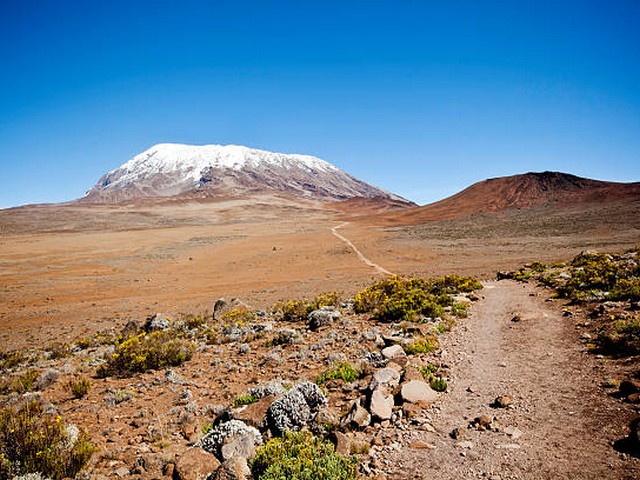Embracing the Wilderness Responsibly: Leave No Trace Trekking on Kilimanjaro
As you set your gaze upon the towering splendor of Mount Kilimanjaro, the highest peak in Africa, it’s easy to be swept away by its majestic beauty. At Kilimanjaro Centre for Trekking and Ecotourism (KCTE), we believe that the true spirit of adventure coexists harmoniously with environmental stewardship. Engaging in Leave No Trace Trekking Kilimanjaro not only enhances your climbing experience but also ensures that this magnificent mountain remains pristine for generations to come. Embark on this journey with us as we explore how to tread lightly and love deeply the natural grandeur of Kilimanjaro.
Why "Leave No Trace" Matters on Kilimanjaro
Kilimanjaro is more than a mountain; it’s a vibrant ecosystem that’s home to a myriad of wildlife and unique flora. As this iconic peak attracts thousands of trekkers annually, the principles of Leave No Trace (LNT) are crucial in preserving its ecological integrity. LNT is not just a practice but a philosophy that fosters respect towards nature and local cultures, ensuring minimal impact on the environment.
The Seven Principles of Leave No Trace
-
Plan Ahead and Prepare: Proper preparation prevents poor performance and reduces the likelihood of impacting the environment. This includes understanding the challenges of Kilimanjaro’s various routes and what you can do to minimize your footprint.
-
Travel and Camp on Durable Surfaces: Stick to established trails and campsites to avoid damaging the surrounding vegetation and soil.
-
Dispose of Waste Properly: Pack it in, pack it out. Carrying out all trash—or disposing of it as directed by guide instructions—is essential.
-
Leave What You Find: Preserve the past: examine, but do not touch, cultural or historic structures and artifacts. Leave rocks, plants, and other natural objects as you find them.
-
Minimize Campfire Impacts: Because of the risk and the environmental damage, campfires on Kilimanjaro are not allowed. Use a portable stove for cooking and enjoy natural nighttime temperatures.
-
Respect Wildlife: Observe wildlife from a distance and never feed the animals. Feeding wildlife damages their health and alters natural behaviors.
-
Be Considerate of Other Visitors: Respect other trail users and protect the quality of their experience. Be courteous and yield to others on the trail.
How KCTE Upholds Leave No Trace Principles
At KCTE, our commitment to Leave No Trace trekking on Kilimanjaro is woven into every aspect of our operations. Our experienced guides are trained in LNT principles and are passionate advocates for the environment. We conduct regular clean-up climbs and educate our trekkers on the importance of eco-friendly practices.
Eco-Conscious Gear and Supplies
We equip our trekkers with high-quality, eco-conscious gear. From biodegradable soaps to solar-powered chargers, we ensure that every product you use has minimal environmental impact. Our meals are prepared using locally sourced ingredients, reducing the carbon footprint and supporting local economies.
Small Group Sizes
By limiting our group sizes, we not only provide a more personalized experience but also reduce the environmental impact on the trails. Smaller groups mean less waste, reduced trail wear, and a lower overall impact on the natural habitat.
Join Us in Protecting Kilimanjaro
When you book your Kilimanjaro trek with Kilimanjaro Centre for Trekking and Ecotourism, you become a part of a larger community of responsible trekkers. Together, we can ensure that the awe-inspiring beauty of Kilimanjaro remains untouched and vibrant. Our expert guides and well-crafted itineraries offer an unparalleled adventure that also respects our planet’s natural resources.
Why Choose KCTE for Your Kilimanjaro Adventure?
- Expertise and Experience: With years of guiding treks, our team has unmatched expertise in navigating Kilimanjaro.
- Commitment to Conservation: We are actively involved in conservation efforts and educate all our clients on sustainable trekking practices.
- Quality and Safety: Your safety and the quality of your trekking experience are our top priorities. We use only the best equipment and maintain strict safety standards.
Frequently Asked Questions
What is the best time of year to attempt Leave No Trace trekking on Kilimanjaro?
The best times to climb Kilimanjaro, considering weather and trail conditions, are during the dry seasons: January to mid-March and June to October. These periods offer the most favorable weather for trekking and minimal environmental impact.
How physically prepared should I be for a trek on Kilimanjaro?
Climbing Kilimanjaro is a physically demanding endeavor that requires prior preparation. We recommend starting a fitness regime at least six months before your trek, focusing on cardiovascular health, strength training, and hiking. However, people of all shapes and sizes have successfully summited; what’s most important is determination and proper acclimatization.
Can families participate in Leave No Trace trekking with KCTE?
Absolutely! We offer family-friendly treks that are tailored to accommodate young adventurers and ensure a safe, enjoyable experience for all ages. Educating young trekkers on LNT principles is a fantastic way to instill a lifelong respect for nature.
Book Your Adventure and Make a Difference
Choosing Kilimanjaro Centre for Trekking and Ecotourism (KCTE) for your next adventure means choosing a partner who values the mountain as much as you do. Contact us today to book your Leave No Trace trekking experience on Kilimanjaro and join us in preserving one of the earth’s most spectacular wonders for future explorers. Embrace the challenge, cherish the memories, and leave only footprints behind.
Climb with us, climb responsibly, and climb for the future of Kilimanjaro.




